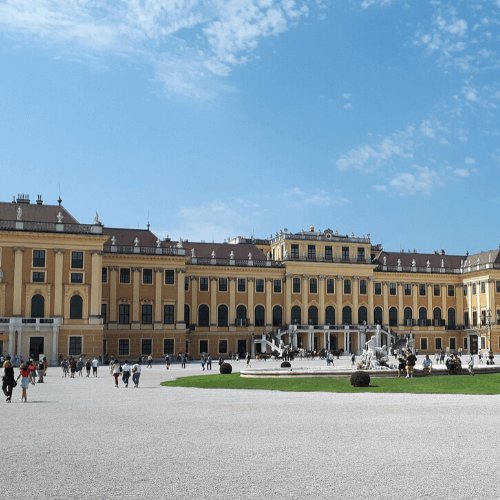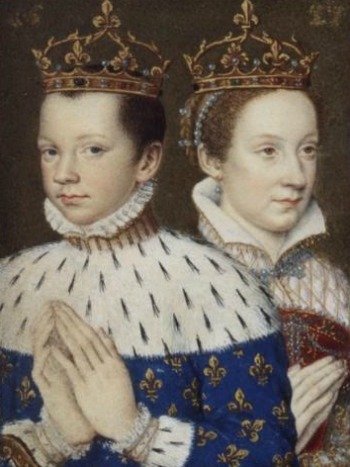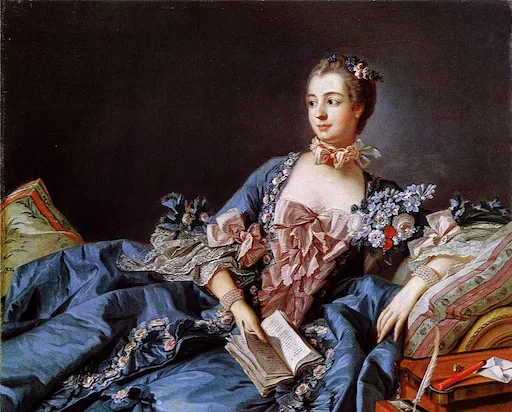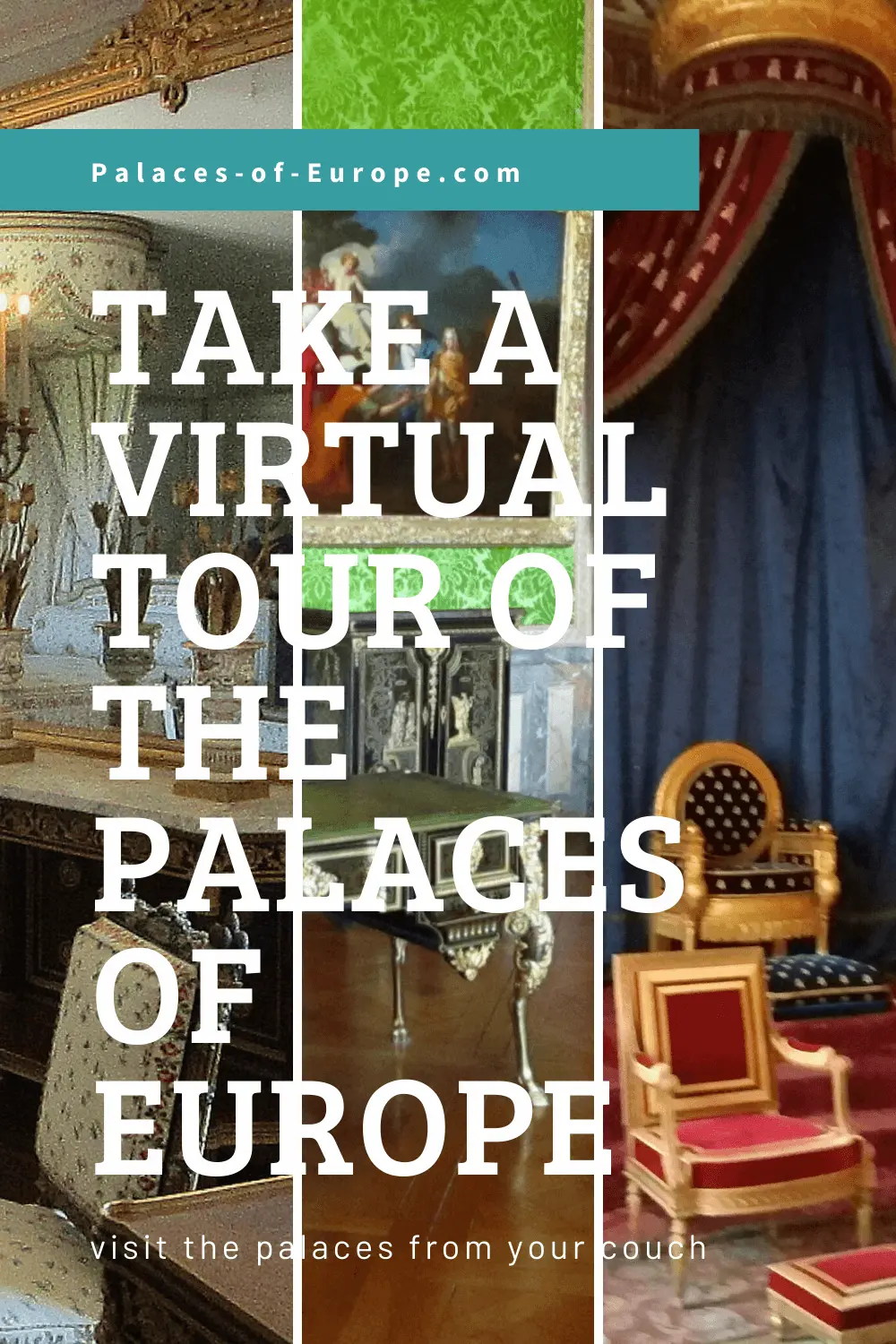Ten prettiest palaces in the Czech Republic
The Czech Republic's prettiest castles have been home to various historical figures throughout the centuries. Some castles, like Prague Castle, have served as the residence for Bohemian kings, Holy Roman Emperors, and Czech presidents.
Other castles, such as Karlštejn Castle, were built as fortresses or summer retreats for royalty. Nobles, aristocrats, and prominent families also resided in castles like Český Krumlov Castle and Hluboká Castle.
The Czech Republic, often referred to as Czechia, is known for its rich history and stunning architecture. Here is the top 10 prettiest palaces in the Czech Republic that are worth visiting:
DISCLOSURE: I get commissions for purchases made through some of the links in this article.
Prague Castle (Pražský hrad)
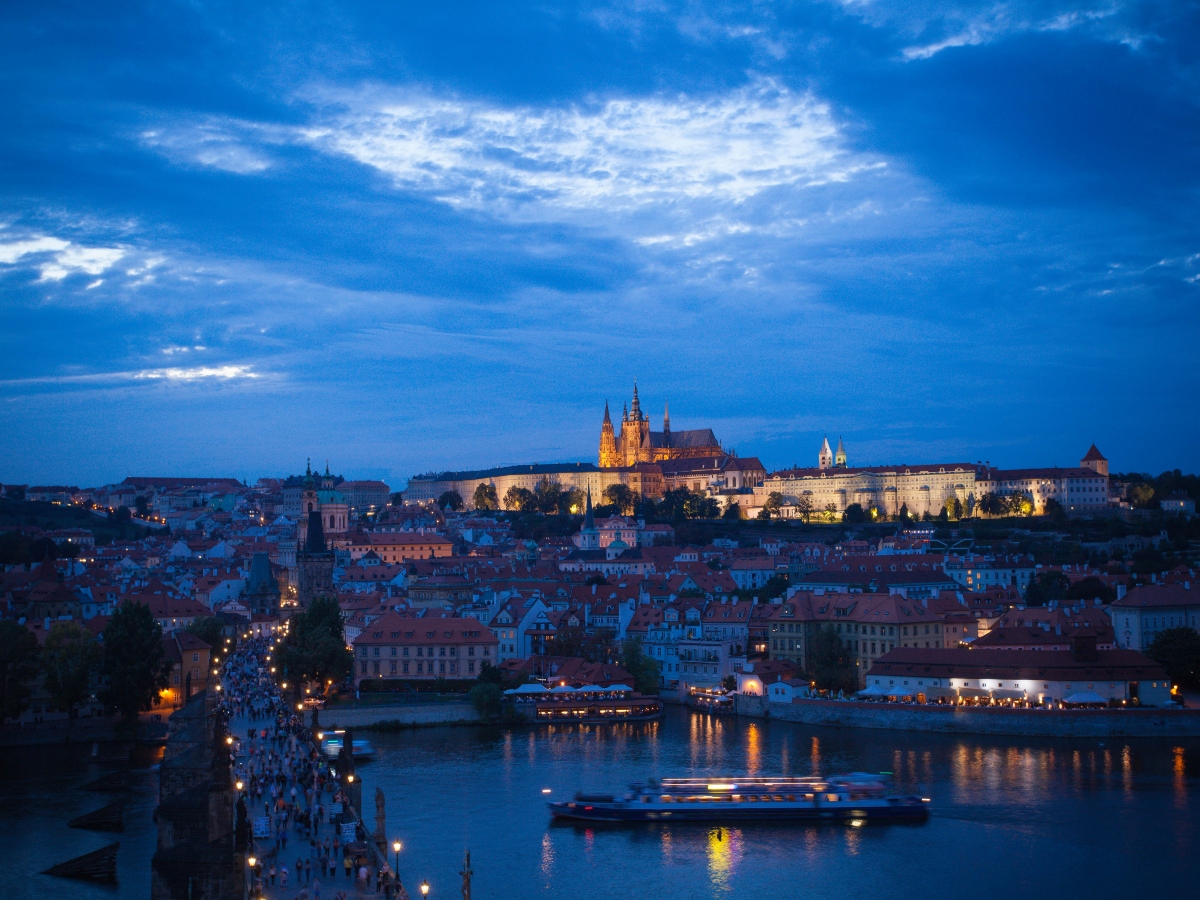
Located in the capital city of Prague, Prague Castle is the largest ancient castle complex in the world. It encompasses various architectural styles and houses several important buildings, including St. Vitus Cathedral, the Old Royal Palace, and the Golden Lane.
Prague Castle served as the residence of Bohemian kings and queens from the 9th century until the early 20th century.
Many rulers of the Kingdom of Bohemia, such as Charles IV and Rudolf II, lived in the castle.
Several Holy Roman Emperors, including Charles IV and Ferdinand I, used Prague Castle as their imperial residence. It was an important political and administrative center of the Holy Roman Empire.
After the establishment of Czechoslovakia in 1918, Prague Castle became the official residence of the Czechoslovak and later Czech presidents.
There are roughly around 30 buildings and structures within the Prague Castle complex, including the majestic St. Vitus Cathedral, the Old Royal Palace, the Golden Lane, various palaces, churches, and administrative buildings. There is lots to see, so start early and plan your visit on a weekday, to avoid the crowds.
Go to the Official website for news and information on opening hours and ticket fees.
There are guided tours available on Get your Guide
Karlštejn Castle
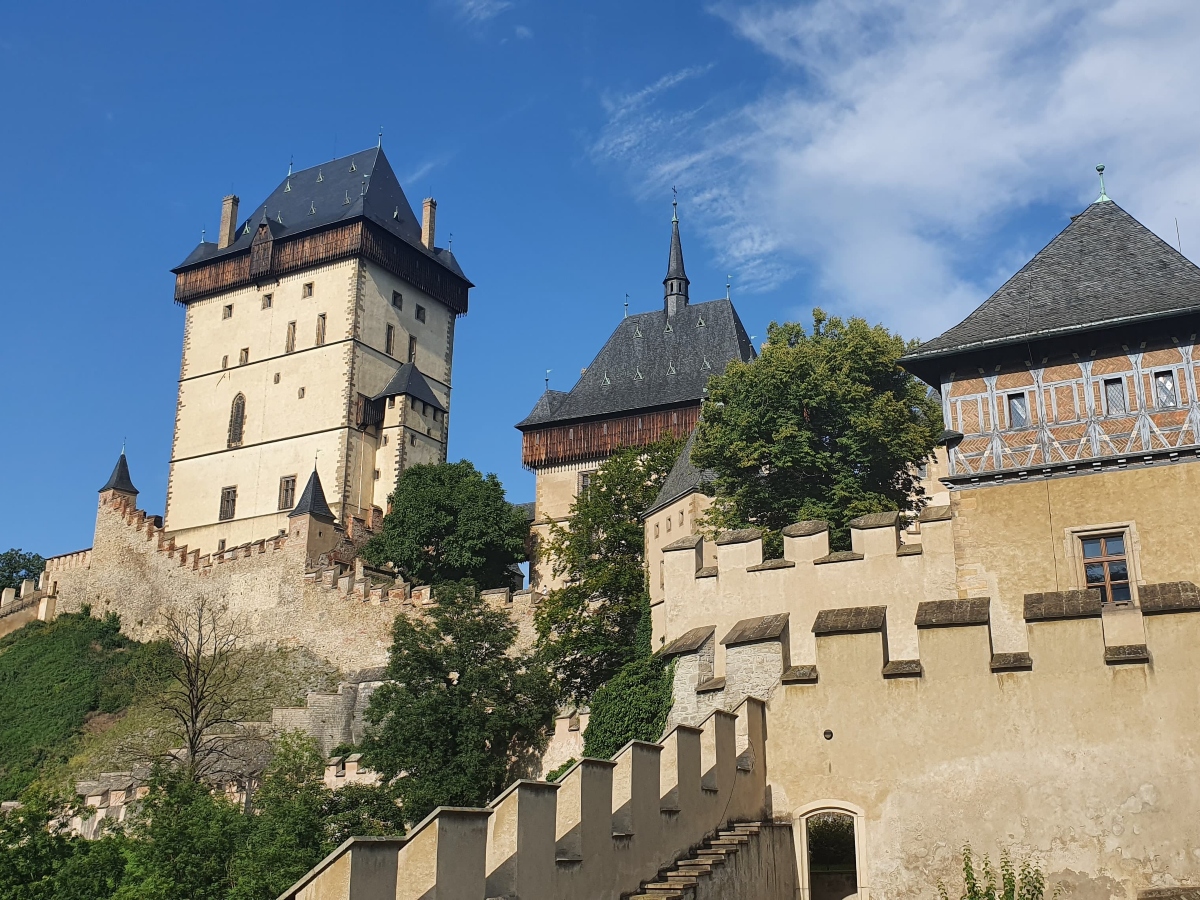
Situated approximately 30 kilometers southwest of Prague, Karlštejn Castle is a Gothic fortress built by Emperor Charles IV. It is known for its stunning location, picturesque views, and the Chapel of the Holy Cross, which houses valuable relics.
In the 14th century, Emperor Charles IV, a lover of art and knowledge, commissioned the castle's construction. Karlštejn Castle's true allure lay hidden within the depths of its secret chambers. Legends spoke of a mystical treasure, a jewel-encrusted relic, said to possess unimaginable power. I reality the holy relics and the crown jewels where stored there.
Karlštejn Castle is the most-visited castle in the Czech Republic, probably because there are many day tour from Prague to the castle, including a full day e-bike tour!
Got to the official website of Karlštejn Castle, or check out tours and skip-the-line tickets.
Český Krumlov Castle
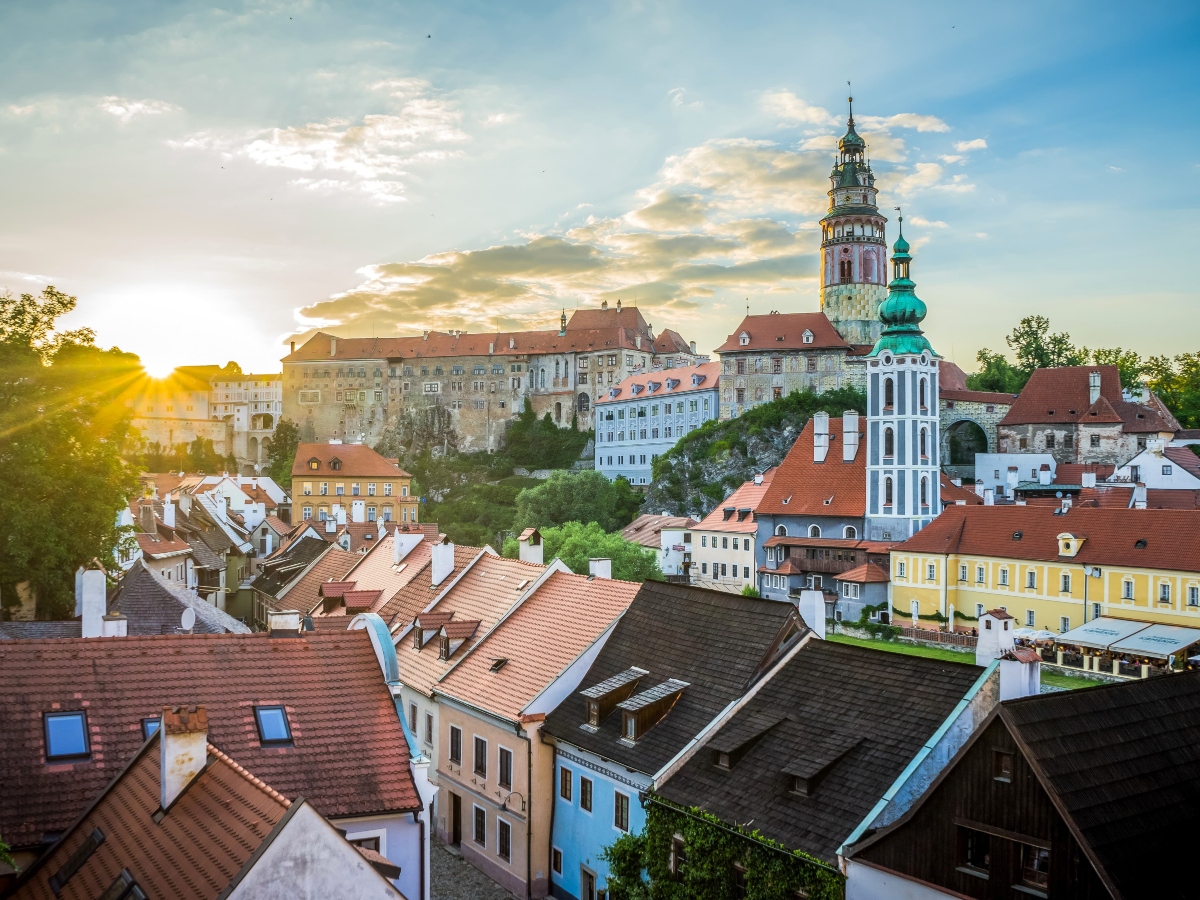
Located in the town of Český Krumlov, this castle is a UNESCO World Heritage site. It features a mix of Gothic, Renaissance, and Baroque architecture and is surrounded by beautiful gardens. The castle also hosts various cultural events throughout the year.
The castle's history dates back to the 13th century, and it served as the seat of the powerful Rožmberk and Schwarzenberg noble families.
Český Krumlov Castle is one of the largest castle complexes in Central Europe, featuring more than forty buildings spread across multiple courtyards, so put on our walking shoes! Even more, because the castle's tower is a must-visit attraction. Climbing to the top of the tower, a total of 162 steps, rewards you with breathtaking panoramic views of the town of Český Krumlov, the Vltava River, and the surrounding landscape.
Within the castle complex, you'll find a preserved Baroque theater from the 17th century. This beautifully restored theater is one of the oldest in Europe and showcases the opulence and artistic prowess of its time.
Many tours to Český Krumlov are available, also starting from Prague or Vienna. If you are in the village already, you can visit the official site for information.
Lednice Castle
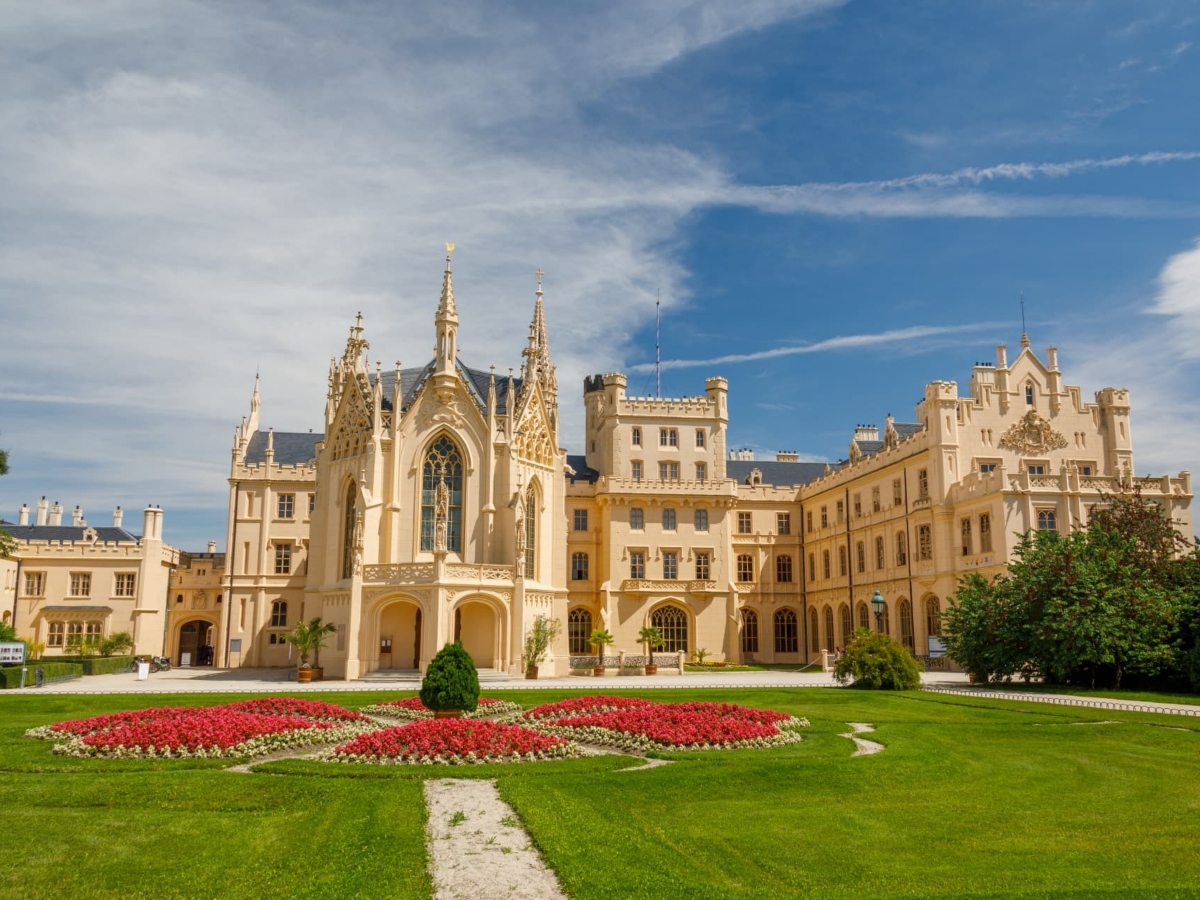
Another UNESCO World Heritage site is Lednice Castle , known for its picturesque setting and romantic architecture.
Lednice Castle was owned by the noble Liechtenstein family since the 1200's. The family transformed the original Gothic fortress into a magnificent Neo-Gothic and Neo-Renaissance palace, creating a stunning architectural masterpiece.
After World War II, the Castle and its surrounding lands were nationalized by the Czechoslovak government. Even though the tiny country of Liechtenstien remainded neutral during the war, the royal House of Liechtenstein and 38 other families in that country were considered German, making them eligible for property confiscation.
One intriguing detail of Lednice Castle is the remarkable artificial cave system located beneath the castle grounds. Known as the "Lednice Castle Underground," this network of tunnels and chambers was created in the 19th century. The purpose of these underground passages was to provide a cool and secluded space during the hot summer months, offering a respite from the heat for the castle's inhabitants. Today, visitors to Lednice Castle can explore a portion of the underground labyrinth.
Hluboká Castle
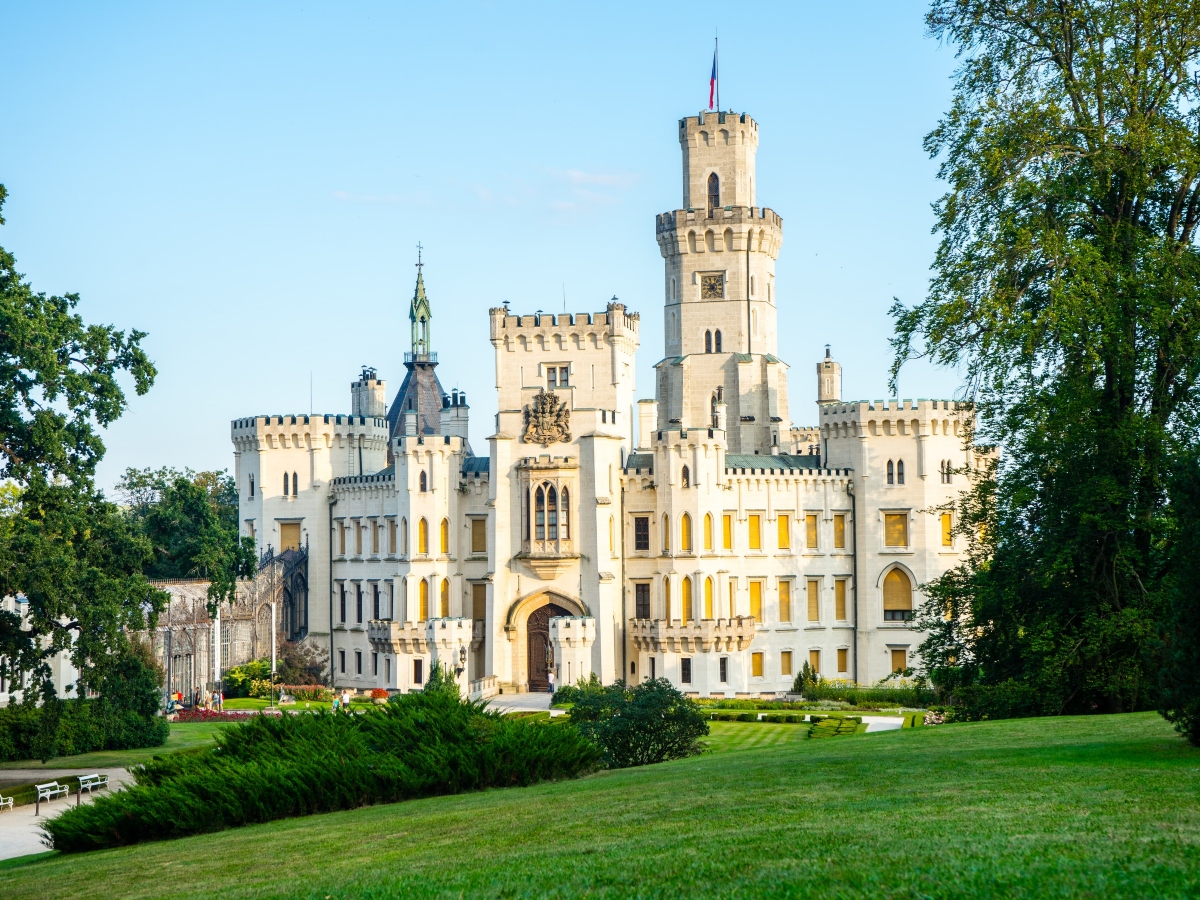
Hluboká Castle is a stunning neo-Gothic castle that resembles the famous Windsor Castle in England. It is also knows as the "Czech Windsor". As property of the Schwarzenberg family who have German origins, this castle was also nationalized by the Czechoslovak government after World War II.
Legend has it that a secret tunnel existed beneath Hluboká Castle, connecting it to the nearby village of Suchdol. The Schwarzenberg family allegedly used this tunnel to transport their most precious artworks and belongings to safety, away from the reach of the invading forces.
The exact details of the tunnel and its usage remain shrouded in mystery, as it was never officially confirmed or openly acknowledged.
The castle's collections showcase a range of historical artifacts, artwork, furniture, and decorative items that provide insight into the castle's past and the lives of its former inhabitants, particularly the Schwarzenberg family.
Go to the Hluboká Castle website for information on tours and tickets.
Konopiště Castle
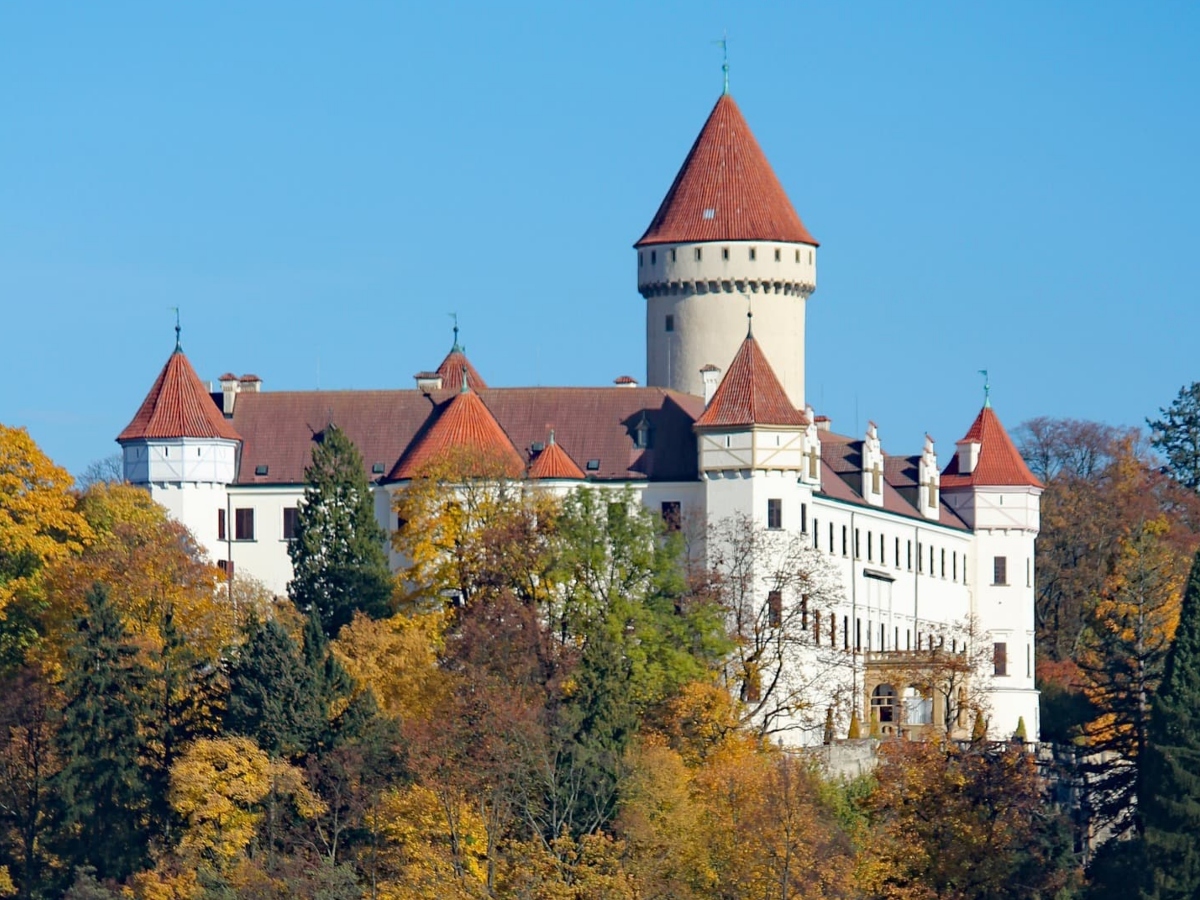
Konopiště Castle is famous for being the former residence of Archduke Franz Ferdinand of Austria. Franz Ferdinand, beside being a really nice rock band, was the eir to the Habsburg throne. His assassination triggered World War I.
Archduke Franz Ferdinand was an avid hunter, and his passion is evident in the vast array of hunting trophies, including animal mounts and hunting memorabilia from his expeditions across the globe.
Less gruwsome is the impressive collection of art, including paintings, sculptures, antique furniture, and exquisite decorative items.
Franz Ferdinand was known for his eccentricity, and he had a particular fascination with technology. The castle features an advanced system of electric lighting, elevators, and central heating, which were considered innovative for their time.
Click here for the official website of Konopiště Castle, or a Konopiště: Chateau Tour from Prague.
Kroměříž Castle
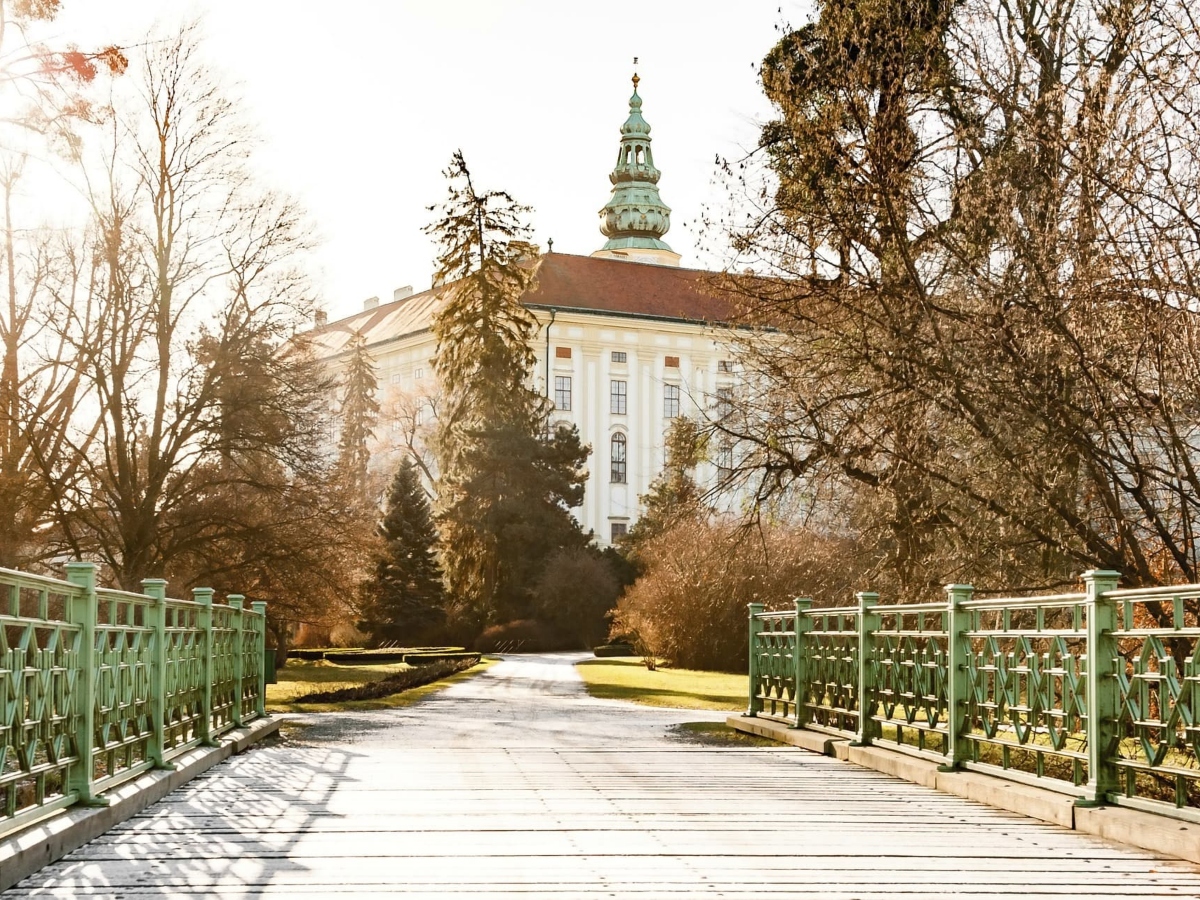
Located in the town of Kroměříž, this castle is another UNESCO World Heritage site.
The castle's extensive library boasts an impressive collection of over 33,000 books, including rare manuscripts and historical documents. The library also contains a book with the first printed music in Moravia, dating back to the 16th century. You can also find manuscripts from composers like Mozart and Beethoven there.
The castle was the main residence of the Bishops of Olomouc. In 1664 the bishop was a member of the powerful Lichtenstein-Kastelkorn family, who renovated the palace in a Baroque style.
Also comes with a tower to climb! It's worth it, you will be rewarded by beautifull sights on the town square.
Bouzov Castle
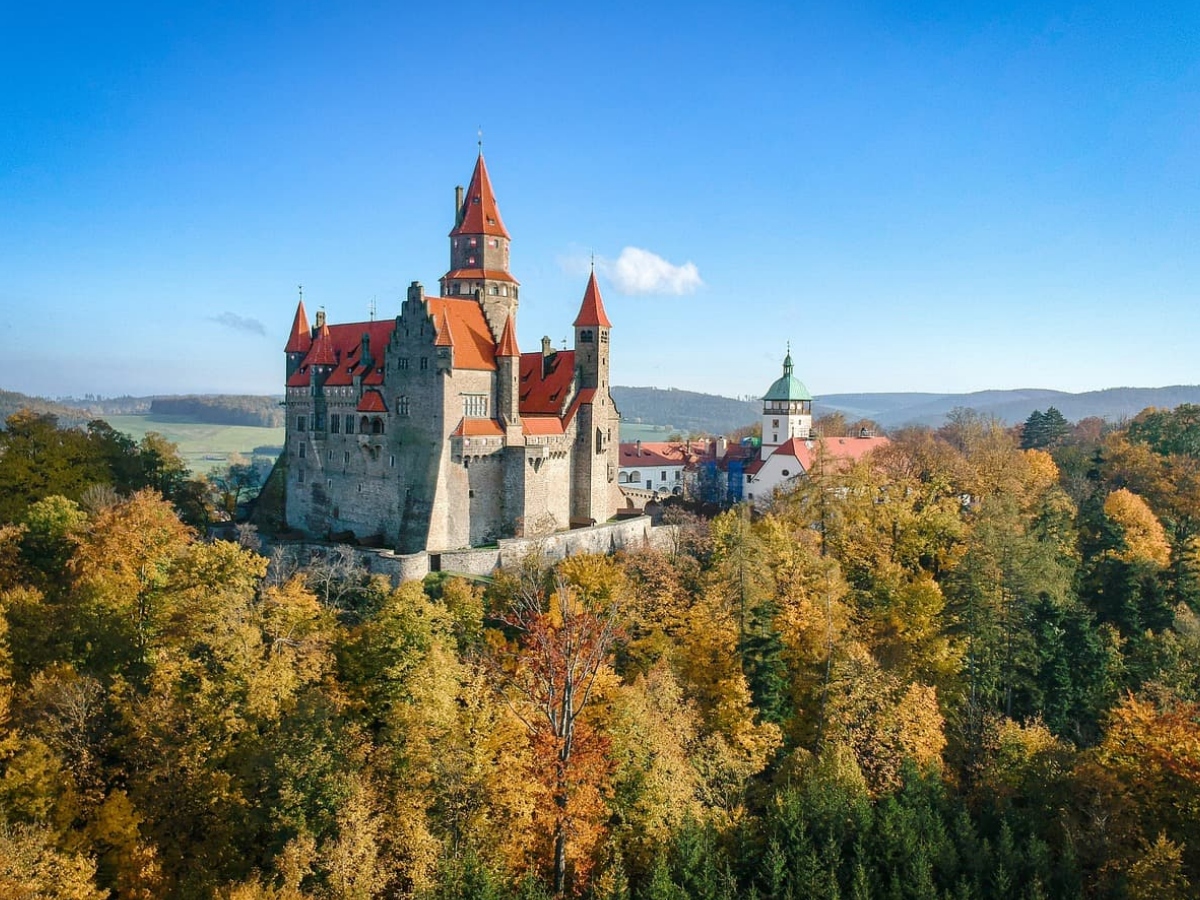
Bouzov Castle is a picturesque fortress with a fairy-tale appearance. It is known for its well-preserved architecture, beautiful surroundings, and regular medieval events.
You can only visit the interior with a guided tour. When there is no tour in your languae, just join another one and take an englisch pamphlet, available at the entrance.
Bouzov Castle was originally owned by the noble House of Pernštejn. They acquired the castle in the 15th century and made significant modifications and expansions to the existing structure.
In the 17th century, the castle was passed into the possession of the House of Salm, a noble family from the Holy Roman Empire. They resided in the castle and undertook further renovations, adding Baroque elements to the castle's architecture.
In the 19th century, Bouzov Castle was purchased by the Order of the Teutonic Knights, a Catholic religious order. They restored the castle and used it as a residence for their members.
After World War II, Bouzov Castle, like many other noble properties, was nationalized by the Czechoslovak state.
Here you can find the official website of Bouzov Castle.
Valtice Castle
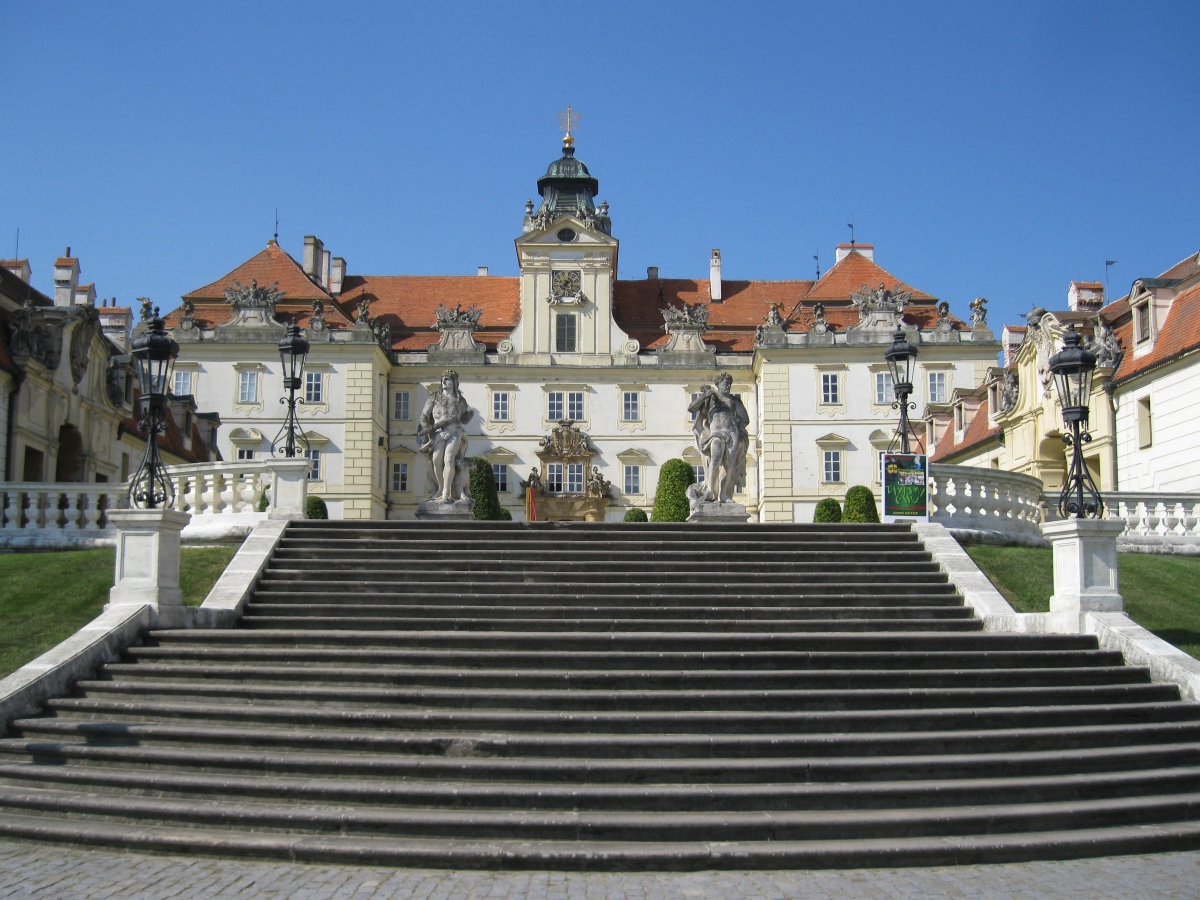
Valtice Castle is renowned for its wine cellars, which store and age a wide variety of local wines. Its labyrinthine cellar system extends for kilometers and is home to countless barrels of exquisite wines.
Located in the town of Valtice, this grand Baroque palace is part of the Lednice-Valtice Cultural Landscape, a UNESCO World Heritage site.
Valtice Palace was also owned and inhabited by the influential noble House of Liechtenstein. The Liechtenstein family, one of Europe's oldest noble dynasties, acquired the palace in the 17th century and made it their primary residence.
Prince Johann I of Liechtenstein played a significant role in the development and expansion of Valtice Palace during the 18th century. He commissioned extensive renovations and additions, transforming the palace into a magnificent Baroque residence.
Following World War II, Valtice Palace, along with other Liechtenstein properties, was nationalized by the Czechoslovak state.
Visit the official website of Valtice Castle
As an Amazon Associate I earn from qualifying purchases





